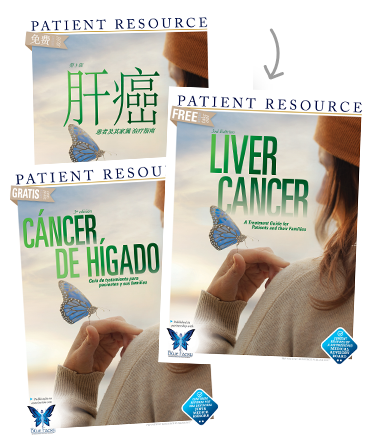
Liver Cancer
NASH
Nonalcoholic steatohepatitis (NASH) is a serious liver condition characterized by inflammation and scar tissue (fibrosis). It is the most severe form of nonalcoholic fatty liver disease (NAFLD), and it is not related to significant alcohol consumption.
Long term, it can progress to a more severe form of fibrosis called cirrhosis and hepatocellular carcinoma (HCC), the most common type of liver cancer. Although a cure for NASH is not available at this time, research is underway to identify proteins or other targets that could aid in preventing both NASH and liver cancer. In the meantime, because screening for NASH is not common and symptoms can take years to develop, it is important to learn about it and what you can do to help prevent it.
About NASH
It is normal to have some fat in your liver. When more than five percent of the liver’s weight is fat, however, it is called a fatty liver and can be dangerous because the buildup of fat makes it harder for the liver to carry out its many important functions.
Some risk factors include the following:
- Being an older adult
- Being overweight or obese, especially with body fat around the abdomen
- High cholesterol, especially triglycerides
- Diabetes or being pre-diabetic
- High blood pressure
- Having a sedentary lifestyle
Though you cannot do anything about your age, you can adopt some lifestyle changes that may lower your risk. In addition, it is essential to keep regular medical appointments and communicate honestly with your doctor. Be open about symptoms you have. They may or may not be related to NASH, but providing as much detail as possible will help your doctor diagnose your condition. When symptoms of NASH occur, they may include being tired and feeling pain in the upper right side of your abdomen where your liver is located.
Testing and Diagnosing
If NASH is suspected, your doctor will consider many factors:
- Prescription and over-the-counter medicines that may increase fat in your liver.
- Any alcohol use. Whether or not you drink alcohol, knowing your habits is helpful to your doctor.
- Your diet.
- Your level of physical activity.
- Your medical history and health conditions that may contribute to a fatty liver.
- Results of a physical exam, including waist circumference and body mass index (BMI).
- Blood tests to check liver enzymes, level of fibrosis (liver scarring) and blood fats, such as cholesterol.
- Test results for hepatitis C that can simultaneously affect your liver
- Specialized imaging tests that measure liver stiffness, which indicates scarring
If indicated, a specialist should perform a biopsy because that is the only way to definitively diagnose NASH.
Testing and Diagnosing
Whether you have NASH or are at risk for developing it, strive to do the following:
- Lose weight.
- Exercise.
- Manage existing health conditions, such as diabetes and high cholesterol.
- Avoid alcohol.
- Consult with your doctor about your use of over-the-counter medications that could affect your liver.
- Get vaccinated for hepatitis A and hepatitis B to reduce your risk of liver injury by these viruses.
- Explore clinical trials that research the relationship between lifestyle, NASH and HCC.
- Join a support group to learn from other people who are facing NASH.
Major lifestyle changes are easier to make with the support of others. Use the resources on this site to find a local or online support group that can connect you with people whose lives are affected by NASH.


